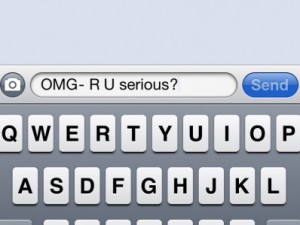To date, every living creature known to man utilizes 6 “essential” elements – carbon, hydrogen, nitrogen, oxygen, phosphorus and sulfur. That’s why in December 2010, when NASA scientist Dr. Feliza Wolfe-Simon made the extraordinary claim that she had found an organism that was able to use arsenic in place of phosphorus, it quickly became a hot topic to both the scientific community and the general public.
Dr. Wolfe-Simon conducted an experiment on a microbe of the Halomonadaceae family, strain GFAJ-1, from Mono Lake, California.

Picture of Mono Lake, California, where Dr. Wolfe-Simon discovered GFAJ-1. Author: Michael Gabler. Wikimedia Commons License.
From this, she drew two contentious conclusions, that GFAJ-1 could use arsenic: 1) as a nutrient when there is no phosphate present 2) in place of phosphorus in its DNA backbone.
Such daring claims require strong evidence, so numerous scientists from a variety of backgrounds scrutinized Dr. Wolfe-Simon’s paper. A landslide of criticism of the study’s methodology and data analysis, as well as her interpretation of the data, ensued. Dr. Redfield was one of the leading voices in this; she published numerous criticisms of Dr. Wolfe-Simon’s paper (blog, twitter, technical comment, and study).
Here is a brief video interview with Dr. Redfield about her study and Dr. Wolfe-Simon’s study:

To conclusively prove Dr. Wolfe-Simon incorrect, Dr. Redfield replicated Wolfe-Simon’s study. She grew GFAJ-1 in media with varying levels of both phosphate (no phosphate – 3.5uM, abundant phosphate – 1500uM) and arsenic (no arsenic – 0mM, abundant arsenic – 40 mM). She then conducted both growth analyses to determine if GFAJ-1 used arsenic as a nutrient, and DNA analyses to determine if arsenic was incorporated into the DNA backbone, on the colonies.
For growth analyses, Dr. Redfield noted that Dr. Wolfe-Simon’s “no phosphate” condition was actually contaminated by 3.5-4 uM of phosphate, an amount which supports moderate growth in most bacteria. Additionally, Dr. Redfield determined that the growth of GFAJ-1 was entirely dependent on the level of phosphate present, and showed no relationship to the level of arsenic, meaning that arsenic is not used for GFAJ-1 growth. DNA analyses using liquid chromatography-mass spectrometry showed that there was no incorporation of arsenic into the DNA backbone of GFAJ-1. Dr. Wolfe-Simon failed to prepare specimens properly by conducting washes; free arsenate in the media is likely what Dr. Wolfe-Simon detected, instead of arsenic incorporation in DNA.
There are many additional criticisms from a variety of angles (chemistry, microbiology, etc.) that scientists, including Dr. Redfield, believed to be glaringly obvious. As the inadequacies of Dr. Wolfe-Simon’s studies were revealed to the public, questions about how Dr. Wolfe-Simon’s study could’ve passed the peer review process were posed to the scientific community. How did the scientific process, and more specifically, the peer review process, not catch the mistakes in Dr. Wolfe-Simon’s paper? Is there a problem with the scientific process, and do we need to change it?
Here’s a podcast with an overview of peer review, and Dr. Redfield’s thoughts on the role of peer review in Dr. Wolfe-Simon’s study:
Audio clip: Adobe Flash Player (version 9 or above) is required to play this audio clip. Download the latest version here. You also need to have JavaScript enabled in your browser.
It seems that although Dr. Wolfe-Simon’s study may be “bad science,” Dr. Redfield does not believe that this is enough to conclude that the peer review process needs to be changed.






